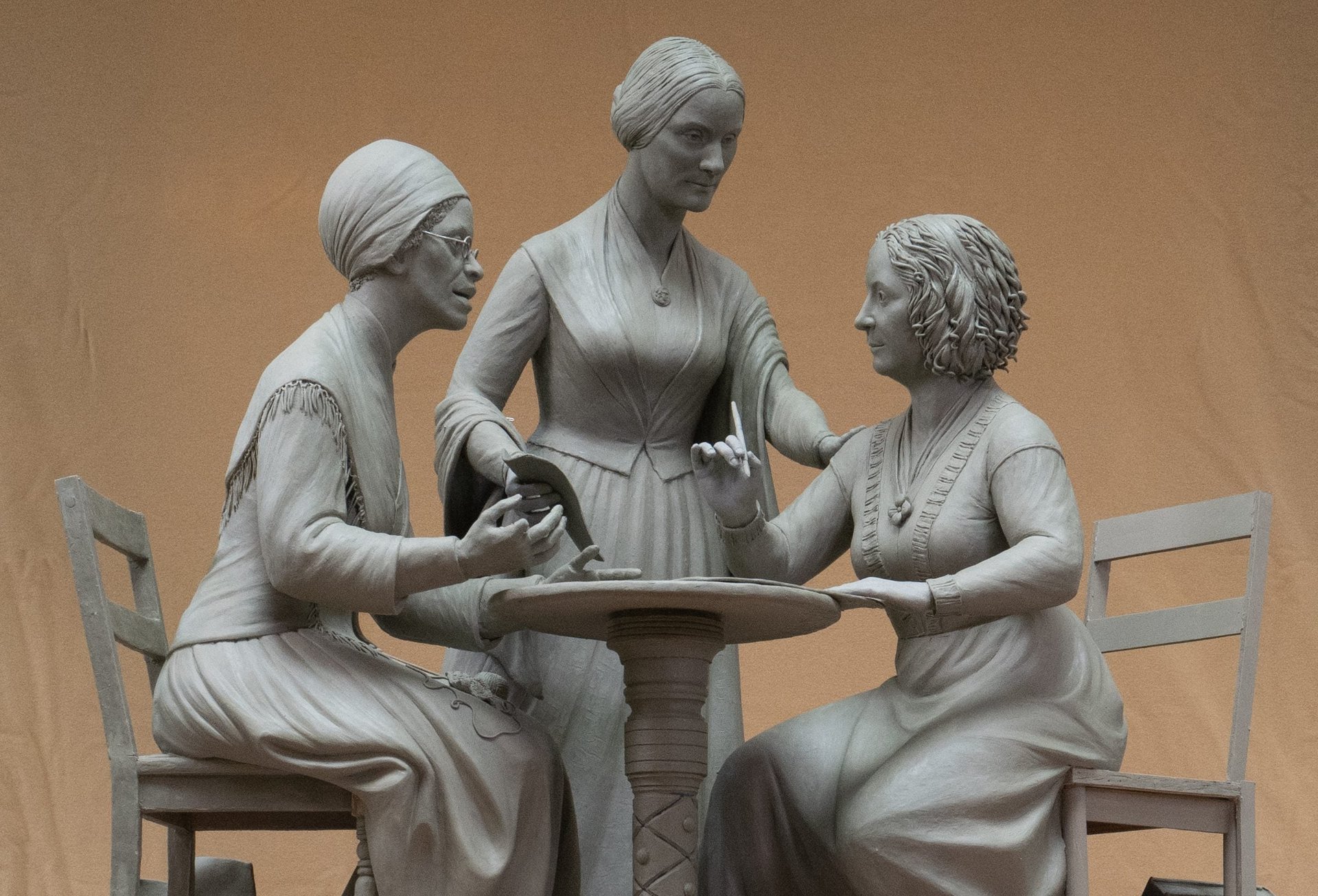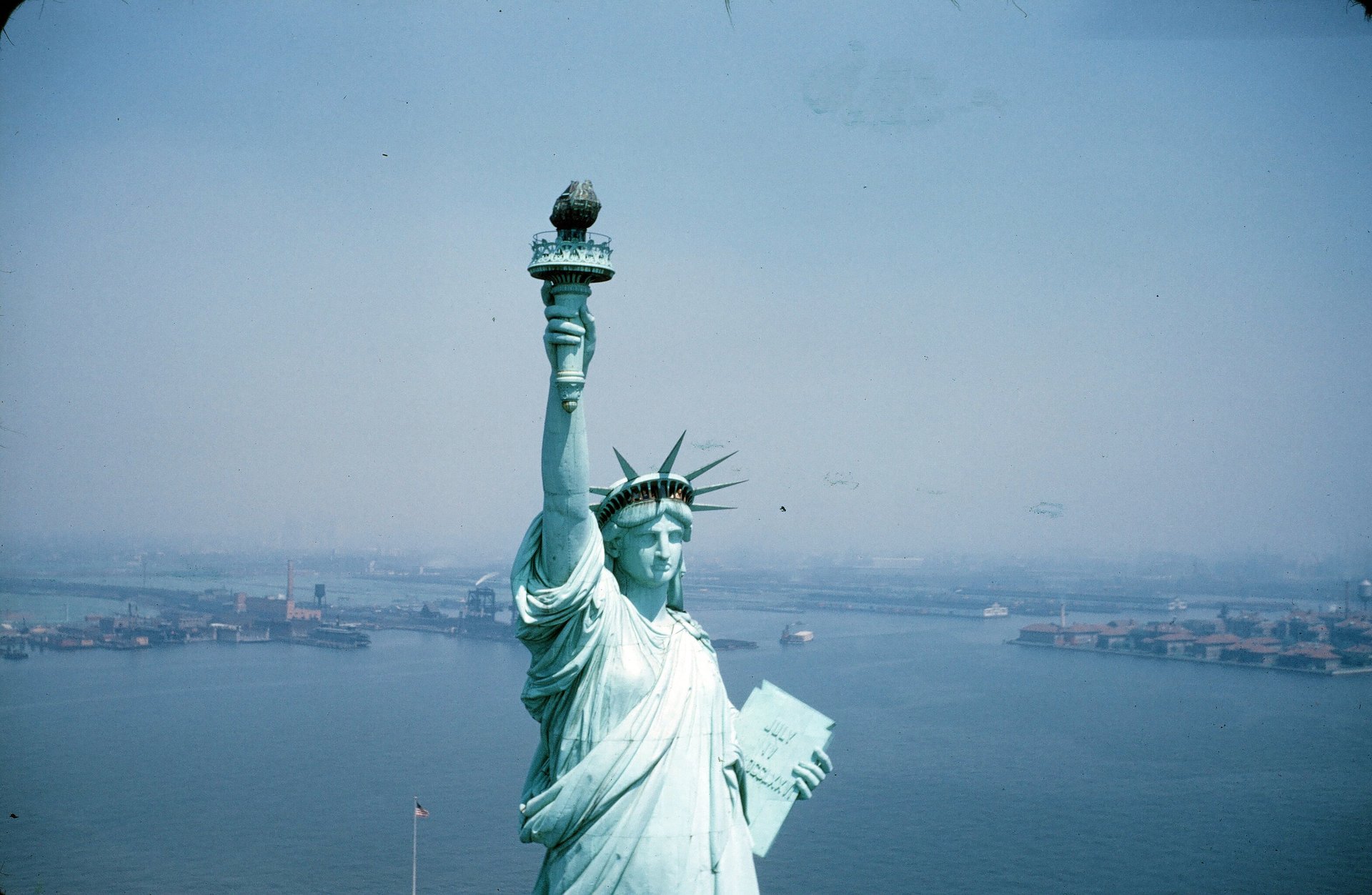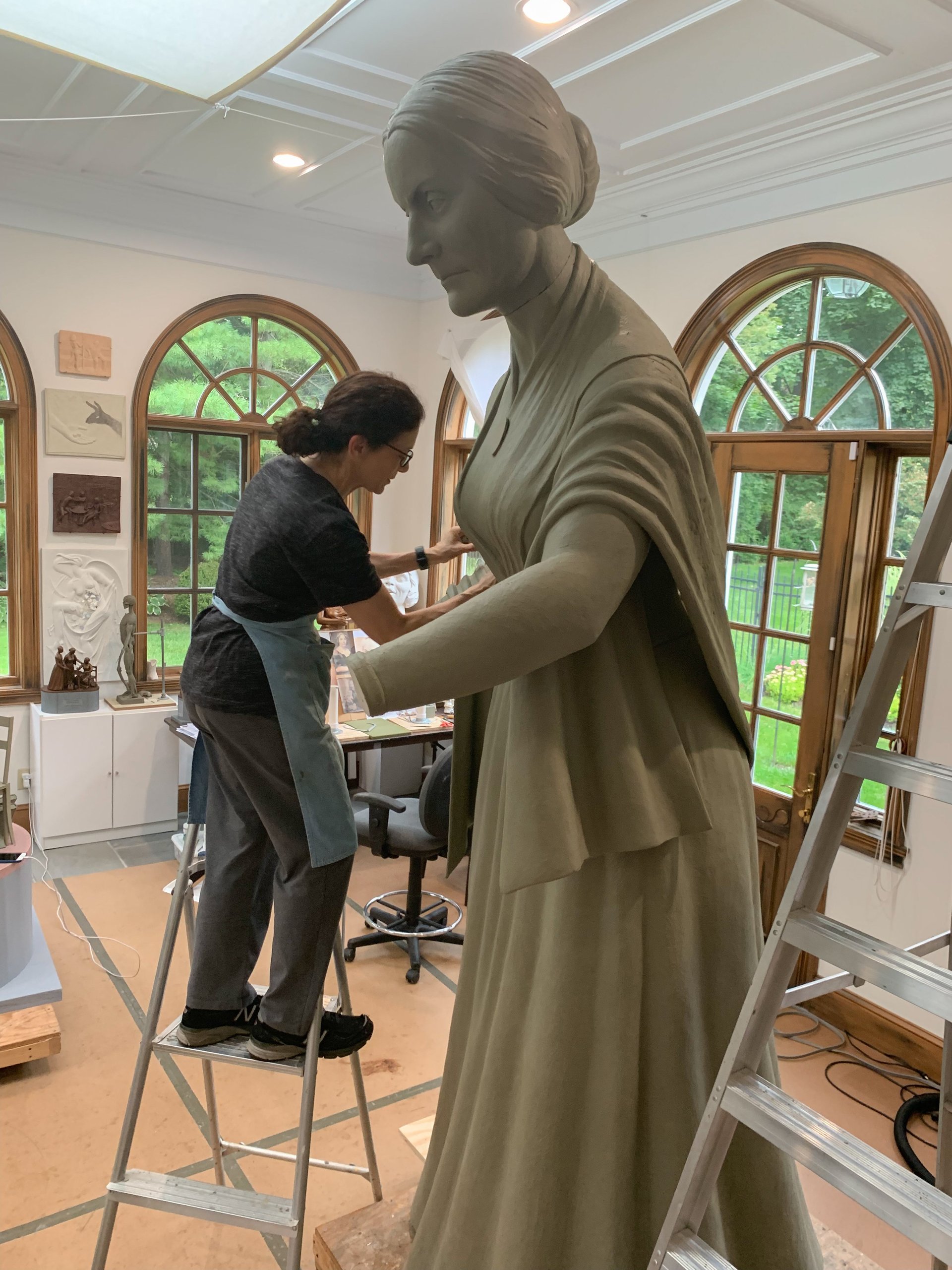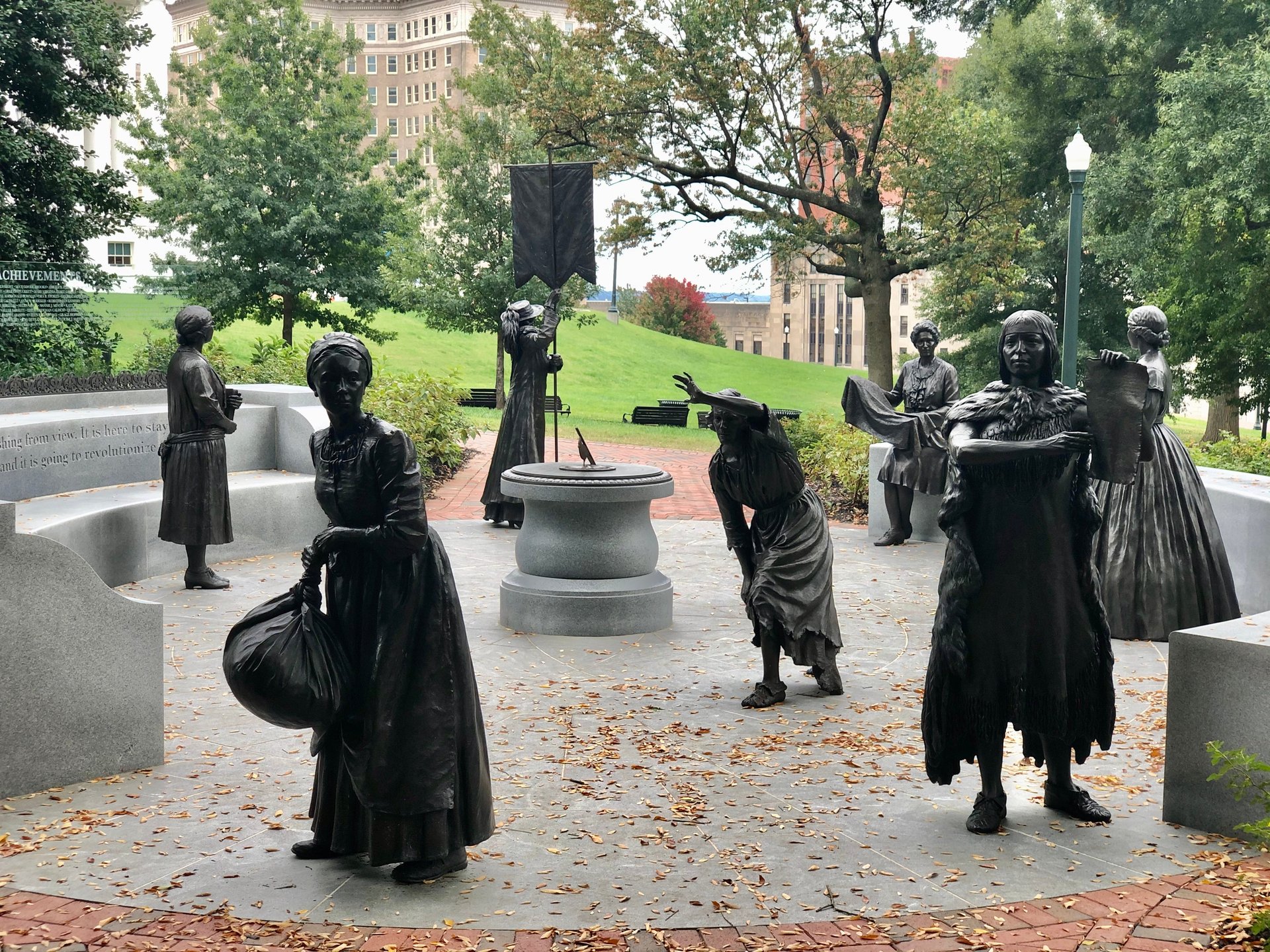The US has fewer than 400 statues of women—but that’s changing
In Manhattan’s iconic Central Park, visitors walking along the winding green paths encounter a Polish king, a Venezuelan military leader, or some eagles with their prey. Romantics sigh in front of fictional Romeo and Juliet; kids take pictures with a sled dog called Balto, or with Mother Goose.


In Manhattan’s iconic Central Park, visitors walking along the winding green paths encounter a Polish king, a Venezuelan military leader, or some eagles with their prey. Romantics sigh in front of fictional Romeo and Juliet; kids take pictures with a sled dog called Balto, or with Mother Goose.
And although there are 23 statues of historical figures in the park, not one of them is a real woman.
Monumental Women is changing that. On Monday, a commission of the New York City council approved the plans to erect a bronze statue of New Yorkers Elizabeth Cady Stanton, Susan B. Anthony, and Sojourner Truth in August 2020. On the centennial anniversary of the ratification of the 19th Amendment, the non-profit organization The Statue Fund, which organized the campaign, will unveil the first statue of real women in Central Park.
“42 million people visit Central Park every year,” says Namita Luthra, who is on the board of directors of the organization. “They deserve to see real women—women who built this country, who helped realize the American promise, who helped expand our definition of we the people.”
But the lack of visibility for notable women isn’t just isolated to New York City. Advocacy groups and policy-makers across the whole US are redefining who deserves to be placed on the pedestal, and how. They’re putting up statues in historical locations, using technology to circumvent the imbalance, pushing for government statue quotas, and prioritizing representation in public art.
“What is the worth of women? How do we value women and girls today? How do we commemorate the contributions they’ve made in the past, and what sort of future legacy do we want to leave?” Luthra says.
Women to be seen
Women have undeniably changed the course of history. In the US alone, they have led the civil rights movement and fought to abolish slavery; they have been great American novelists and held power to account as investigative journalists; they were among the first to fly across the Atlantic Ocean, and pushed for new legislation to gain the right to vote.
But public art has largely let these accomplished women fall to the margins—women are rarely depicted at all. That’s especially true when it comes to statues, a form of art that is designed to be public and visible.
At a different time in history, the dominance of male statues might have made sense. Men got to exist in the public realm, while women were mostly relegated to the home. Women had artistic influence in household items (like quilts), but sculpture was a male-dominated art form, explains Mya B. Dosch, a professor of American art at California State University, Sacramento.
“Even thinking about the word ‘erect’, ‘to erect a statue.’ Heroic statues are very phallic; it’s a very masculine way to take up space,” she says. Throughout history, most statues honor heroes or victims. But until recently, Dosch explains, women weren’t deemed worthy of either those roles, or part of that public discourse.
One thing women could be, though? Metaphors. Most artistic representations of females depict fictional ideals, allegories, or mythic creatures, such as Liberty, Justice, Beauty, half naked nymphs, angels of water, and a 19th century author’s conceptualizations of trips to a wonderland. Many of these statues of feminine entities are overly sexualized and objectified.

Across the US, there are fewer than 400 public statues of women. San Francisco has three statues of historical women and 85 of men. In Washington, D.C. some of the statues depicting women represent the metaphorical ideals of our democracy. In New York City, only five of 150 statues are real women.
The problem extends to other countries, too. In the UK, out of 828 recorded statues, 94 are nameless representations of females and 80 are named women, according to the BBC. But approximately 15 of those named women aren’t real women, and a whole 38 of them are royal figures—mainly various versions of Queen Victoria I. In Australia there are more statues of animals than of women; just under 4% of all of the country’s statues represent historical female figures, according to columnist Tracey Spicer.
This lack of representation has real effects. Because women—actual, real women—couldn’t be venerated in the form of sculpture, people subconsciously understood that women weren’t worthy of being emulated and idolized.
“Who gets to be on a pedestal? Who gets to be looked up to? As a young girl I couldn’t aspire to be Liberty!” Dosch explains.
Activists and experts in the field sometimes call this gender gap in statues a marble or bronze ceiling. (Ironically, Dosch points out, most historical statues of men were made possible by fundraising efforts by women. For example, the Daughters of the Confederacy collected funds for all the statues of the Confederates we have across America, Dosch explains.)
A time to stand up
Monumental Women is a campaign launched by The Elizabeth Cady Stanton and Susan B. Anthony Statue Fund, Inc. (the Statue Fund), a nonprofit, all-volunteer organization with 12 board members. The organization started campaigning for suffragette statues in Central Park’s Literary Walk over six years ago, but the bureaucracy and policy hurdles have made this a long journey.
The campaign has raised more than $1.5 million from historians, women’s groups, politicians, foundations, and government members, and award-winning sculptor Meredith Bergmann (who also made the Boston Women’s Memorial) will complete the statue. The initial project only included Elizabeth Cady Stanton and Susan B. Anthony, but after being publicly criticized by activists for whitewashing history and leaving out suffragettes of color, its designers revised it to include Sojourner Truth. The three women will be depicted standing around a table drafting a document.

The work of Monumental Women and other activist organizations comes at a time when the figures we cast in bronze are under more scrutiny than ever. Activists and policy-makers are gradually working to take down statues of controversial figures from the Civil War and the Confederacy. This has caused a dispute among art historians. Some argue that taking down historical markers is erasing the cultural context in which they were put up in the first place; others think that our public art should reflect our shared values, and should be renegotiated as they change.
But most organizations are finding ways to increase women’s representation without felling any statues. Instead, most seek to add them.
In 2017, two Australian artists started working on 10 bronze sculptures of women (ranging from Oprah Winfrey and P!nk, to Jane Goodall and Gabby Douglas) and, on Women’s Equality Day (in August), unveiled and displayed them on New York’s Avenue of the Americas. Overnight, the artists changed the ratio of male to female statues. The project’s web site says more than 250 million people visited the makeshift exhibit in August alone. The couple is also working to temporarily bring female statues to 12 global cities in the US and beyond.
In 2018, Salt Lake City-based statue manufacturer Statues.com started a campaign called “Where Are The Women?” in an effort to produce 20 seven-inch busts of heroic American women to launch in 2020. The daughter of Illinois poet laureate Gwendolyn Brooks and the great-granddaughter of investigative journalist Ida B. Wells have separately pushed to get statues of their inspirational family members in public sites in Chicago. Brooks’ statue was unveiled last year in Brooks Park, while Wells’ statue will likely be installed by the end of 2019.
Physical statues are not the only way to increase women’s representation in public monuments. The nonprofit Movers and Shakers is using augmented reality “to highlight underrepresented narratives” in public art. They’ve hired coders and digital designers to erect hologram statues of women and people of color, like Serena Williams, by “tagging” them to locations across all of New York City. Movers and Shakers will be releasing 20 augmented reality monuments in February for Black History Month on its phone app (which is currently in prototype phase).
Governments are also involved in this change in public art. Some municipalities, like New York City, have started adding educational material to male-dominated monuments to provide more inclusive historical context. For example, the council was debating whether to take down the Christopher Columbus statue in Manhattan’s Columbus Circle, but instead decided to add information contextualizing his history.
Women.nyc, a city government initiative promoting gender equality, launched She Built NYC, a public-arts campaign pushing to erect six statues of seven pioneering historical women across all boroughs, such as Sylvia Rivera, Marsha P. Johnson, and Katherine Walker.
“This initiative represents the most far-reaching effort in the US to address the historical (and glaring) imbalance of representation in public art,” says Faye Penn, executive director of women.nyc.

Other states and cities are pushing for more female statues. On Oct. 14, Virginia’s governmental Women’s Monument Commission unveiled a group of seven statues called Voices from the Garden: The Virginia Women’s Monument in Richmond. These are the first of 12 bronze real-size statues of women interacting with each other in Capitol Square, all surrounded by a glass wall etched with 400 additional names of relevant historical women. San Francisco has passed legislation requiring women to make up at least 30% of nonfictional figures in statues (and also in the names of streets and public buildings); Washington, D.C. is considering policy to place at least one monument to a woman in each of its eight wards over the next 10 years.
All these initiatives come with educational programs intended to teach the public about monumental women in history. “The monuments are important, I’m a believer in the monuments,” says Gale Brewer, Manhattan’s Borough President. “[But] I’m more of a believer in the history and the ongoing discussion in our community. If we do these monuments they have to be accompanied with extremely intensive information, on apps, online, in the schools. And I know they will.”
In fact, advocates say this movement is much bigger than monuments—this is about realizing that women’s absence from history makes a difference. “We are going back to erecting statues for heroes, but we’re redefining and rethinking the hero monument,” says Dosch.
Correction: An earlier version of this article misnamed the government organization that launched She Built NYC, and misstated the number of statues the organization planned to erect.